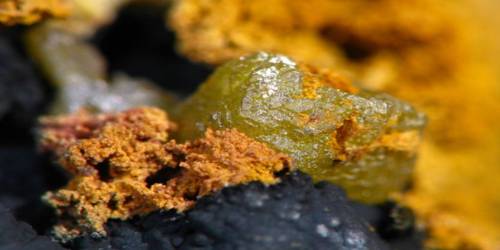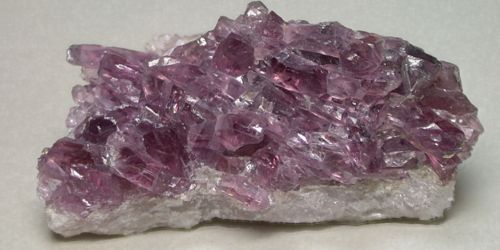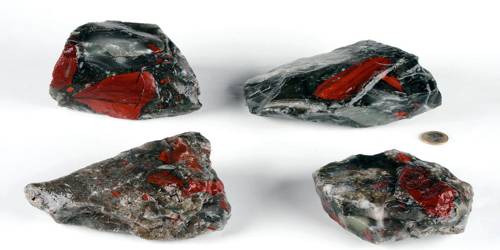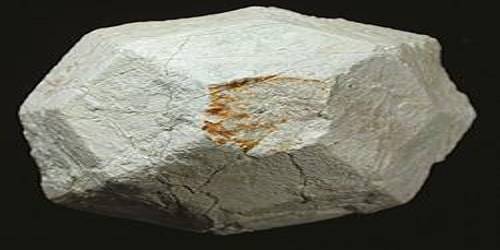Khatyrkite is a rare mineral which is mostly composed of copper and aluminum but may contain up to about 15% of zinc or iron. Its chemical structure is described by an approximate formula (Cu, Zn)Al2 or (Cu, Fe)Al2. It is a copper-aluminum mineral, closely related to cupalite.
It was discovered in 1985 in a placer in association with another rare mineral cupalite [(Cu, Zn, Fe)Al]. These two minerals have only been found in the area of the Listvenitovyi Stream, in the Khatyrka zone of the Koryak Mountains, in Beringovsky District, Chukotka, Russia.
General Information
- Category: Native element class, alloy
- Formula: (Cu, Zn, Fe)Al2
- Crystal system: Tetragonal
- Crystal class: Ditetragonal dipyramidal (4/mmm)
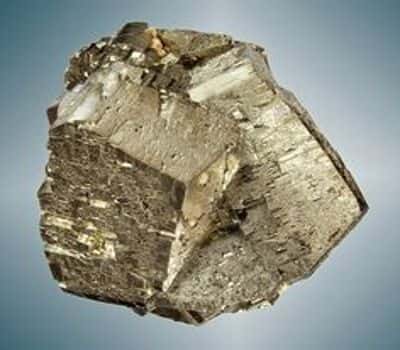
Fig: Khatyrkite
Properties
The crystals are malleable, that is they deform rather than break apart upon a strike; they have the Mohs hardness is between 5 and 6 and Vickers hardness is in the range 511–568 kg/mm2 for a 20– 50-gram load and 433–474 kg/mm2 for a 100-gram load. Khatyrkite forms dendritic, rounded, or irregular grains, typically below 0.5 millimeters in size, which are intergrown with cupalite.
- Color: Gray-yellow (reflection)
- Crystal habit: Prismatic crystals and intergrowths with cupalite
- Cleavage: {100}, distinct
- Tenacity: Malleable
- Mohs scale hardness: 5–6
- Luster: Metallic
- Streak: Dark gray
- Diaphaneity: Opaque
- Specific gravity: 4.42 (calculated)
The mineral is opaque and has a steel-gray yellow tint in reflected light, similar to native platinum. Isotropic sections are light blue whereas anisotropic ones are blue to creamy pink. Strong optical anisotropy is observed when the crystals are viewed in polarized light.
Occurrence: In black slick washed from greenish gray cover weathering from serpentine.
The mineral’s name derives from the Khatyrka zone where it was discovered. Its type specimen (defining sample) is preserved in the Mining Museum in Saint Petersburg, and parts of it can be found in other museums, such as Museo di Storia Naturale di Firenze.
Association: Cupalite, two unnamed zinc aluminides.
A geological expedition has identified the exact place of the original discovery and found more specimens of the meteorite.
Information Source;

